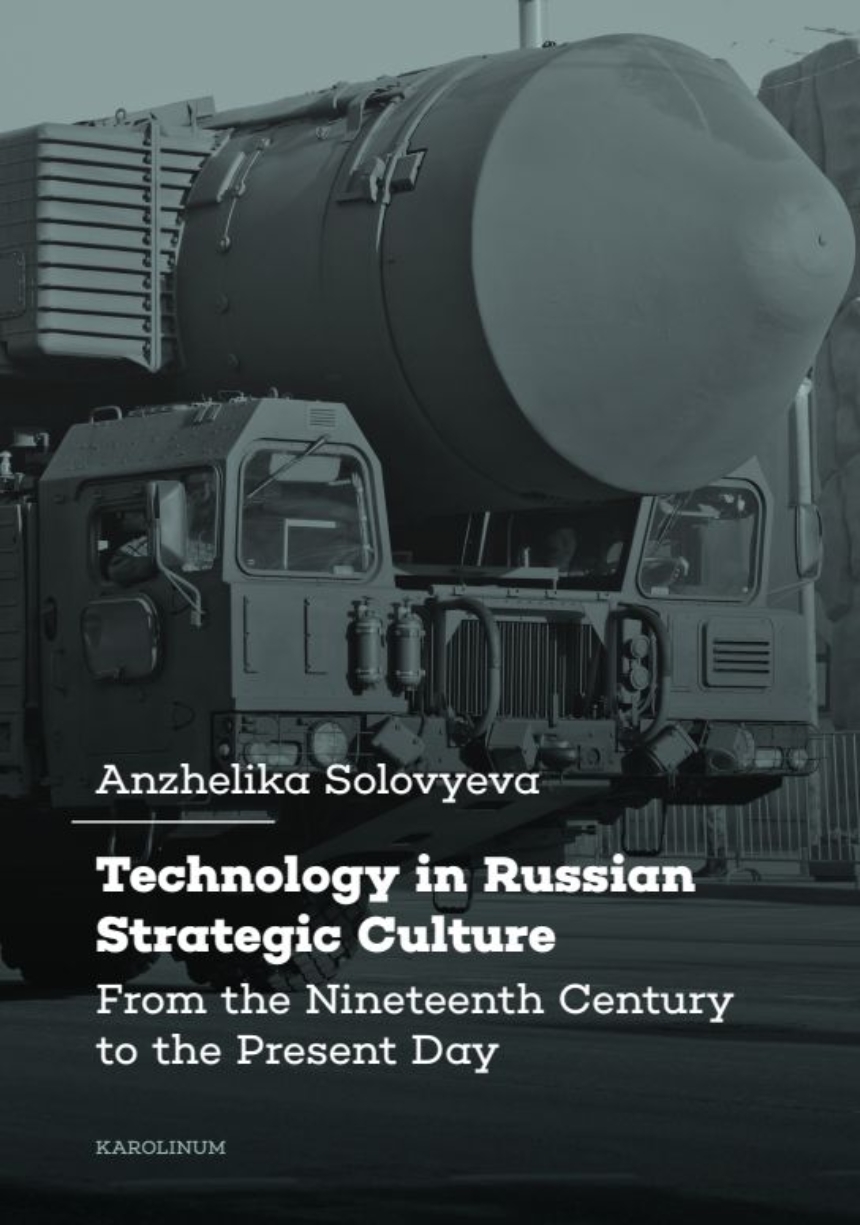Karolinum Press, Charles University
Technology in Russian Strategic Culture
From the Nineteenth Century to the Present Day
9788024656632
Distributed for Karolinum Press, Charles University
Technology in Russian Strategic Culture
From the Nineteenth Century to the Present Day
A history of military-technological innovation in Russia.
This book traces the dynamics of military-technological innovation in Russia over the last hundred and fifty years, particularly focusing on three distinct periods: the introduction of rifled breech-loading weapons in Imperial Russia in the nineteenth century, the invention of nuclear weapons in the Soviet Union in the twentieth century, and the development of precision-guided weapons in post-Soviet Russia in the twenty-first century. The analysis relies extensively on primary data obtained from Russian archives, complemented by a series of expert interviews, and deciphers Russia’s distinct strategic cultural approach to military-technological innovation.
This book traces the dynamics of military-technological innovation in Russia over the last hundred and fifty years, particularly focusing on three distinct periods: the introduction of rifled breech-loading weapons in Imperial Russia in the nineteenth century, the invention of nuclear weapons in the Soviet Union in the twentieth century, and the development of precision-guided weapons in post-Soviet Russia in the twenty-first century. The analysis relies extensively on primary data obtained from Russian archives, complemented by a series of expert interviews, and deciphers Russia’s distinct strategic cultural approach to military-technological innovation.
An open access version of this book is available.
198 pages | 5.67 x 8.07 | © 2024
History: Military History
Political Science: Diplomacy, Foreign Policy, and International Relations
Reviews
Table of Contents
List of Abbreviations 3
List of Figures 4
Introduction 5
1. Military Technology in Russian Strategic Thinking 12
1.1 Technology as an Added Value to the Nation’s Military Power 13
1.2 Technology as a Component of Defence Capability 15
1.3 Technology as a Political Artefact 17
1.4 Technology as a Highly Constrained Domain 18
1.5 Technology as a Source of Asymmetry 19
1.6 Technology as a Subject of Diplomacy 21
2. Russia’s Strategic Cultural Approach to Military-Technological Innovation: An Analytical Framework 24
2.1 Recurring Patterns and Strategic Culture 25
2.2 Triangular Conceptualization of Russia’s Strategic Cultural Approach to Military-Technological Innovation 32
2.3 Russia’s Organizational Culture: Developmental State Models 43
2.4 Putting the Process in Motion: Conflict Dynamics 45
2.5 Research Methodology 47
3. Rifled Breech-Loading Weapons 52
3.1 The Crimean War as a Major Turning Point 52
3.2 The Quest for Symmetry and Emulative Tendencies 55
3.3 Beyond Technology: Preserving Russia’s Asymmetric Advantage 69
3.4 Russia’s Diplomatic Response: The Hague Conference of 1899 72
3.5 Synthesis of the Approach: A Range of Asymmetric Reactions 82
4. Nuclear Weapons and Delivery Vehicles 87
4.1 Asymmetric Response to the World’s First Atomic Bombings 88
4.2 Forced into the Revolution in Military Affairs 90
4.3 The Circle Closes: The Role of the USSR in Nuclear Arms Control 116
4.4 Synthesis of the Approach: Two Seemingly Incompatible Paths 122
5. Precision-Guided Conventional Weapons 128
5.1 Conceptualization of Revolutionary Potential 129
5.2 Going (A)symmetric: Failed Ambitions of the USSR 135
5.3 The Gulf War as a Major Turning Point 140
5.4 Asymmetric Assurance: The Nuclear Escalation Ladder 143
5.5 Seeking Symmetry: Embarking on the Revolution in Military Affairs 148
5.6 Twisted (A)symmetries 167
5.7 Synthesis of the Approach: Ambitions for Symmetry and Asymmetric Engagement 175
6. Conclusion 180
6.1 Synthesis and Outline of the Russian Strategic Cultural Approach to Military-Technological Innovation 183
6.1.1 Reactive Innovation 184
6.1.2 Punctuated Innovation 187
6.1.3 Compensatory Innovation 190
6.1.4 Reluctant Innovation 192
6.1.5 Steered Innovation 195
6.1.6 Symbolic Innovation 197
6.1.7 Manpower-Balanced Innovation 201
6.2 Asymmetric Balancing and Further Contributions 203
List of References 208
List of Interviews 242

